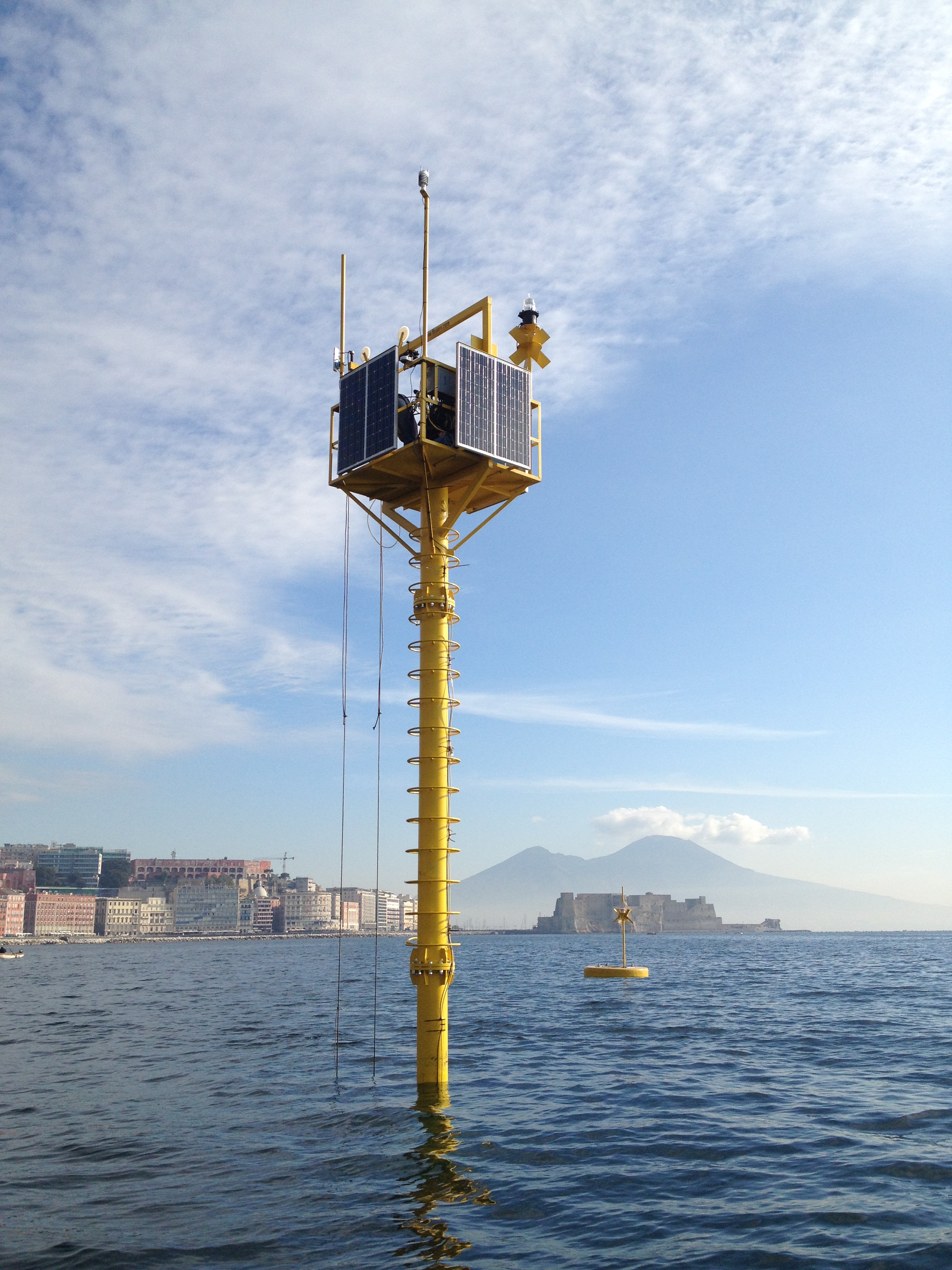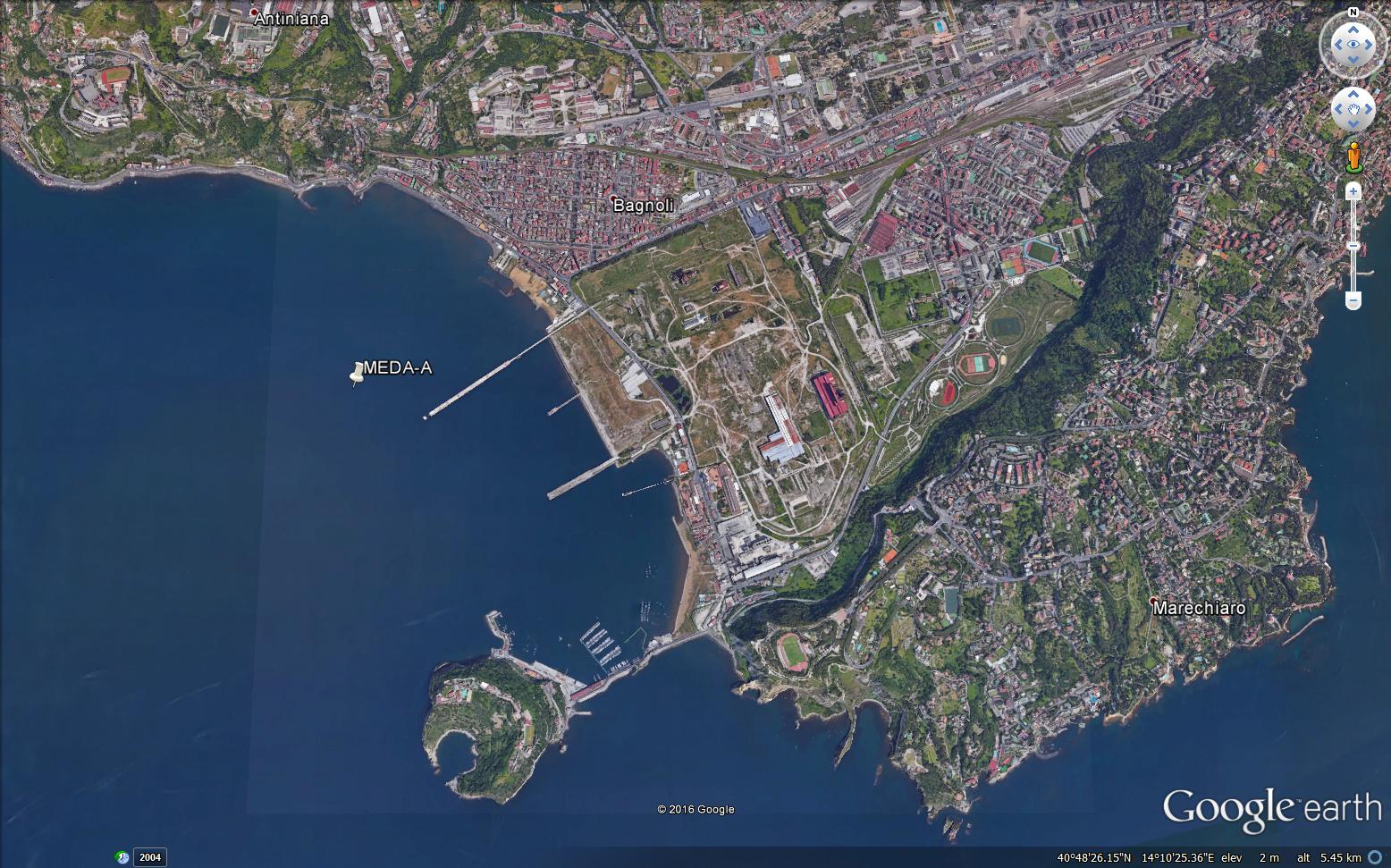 |
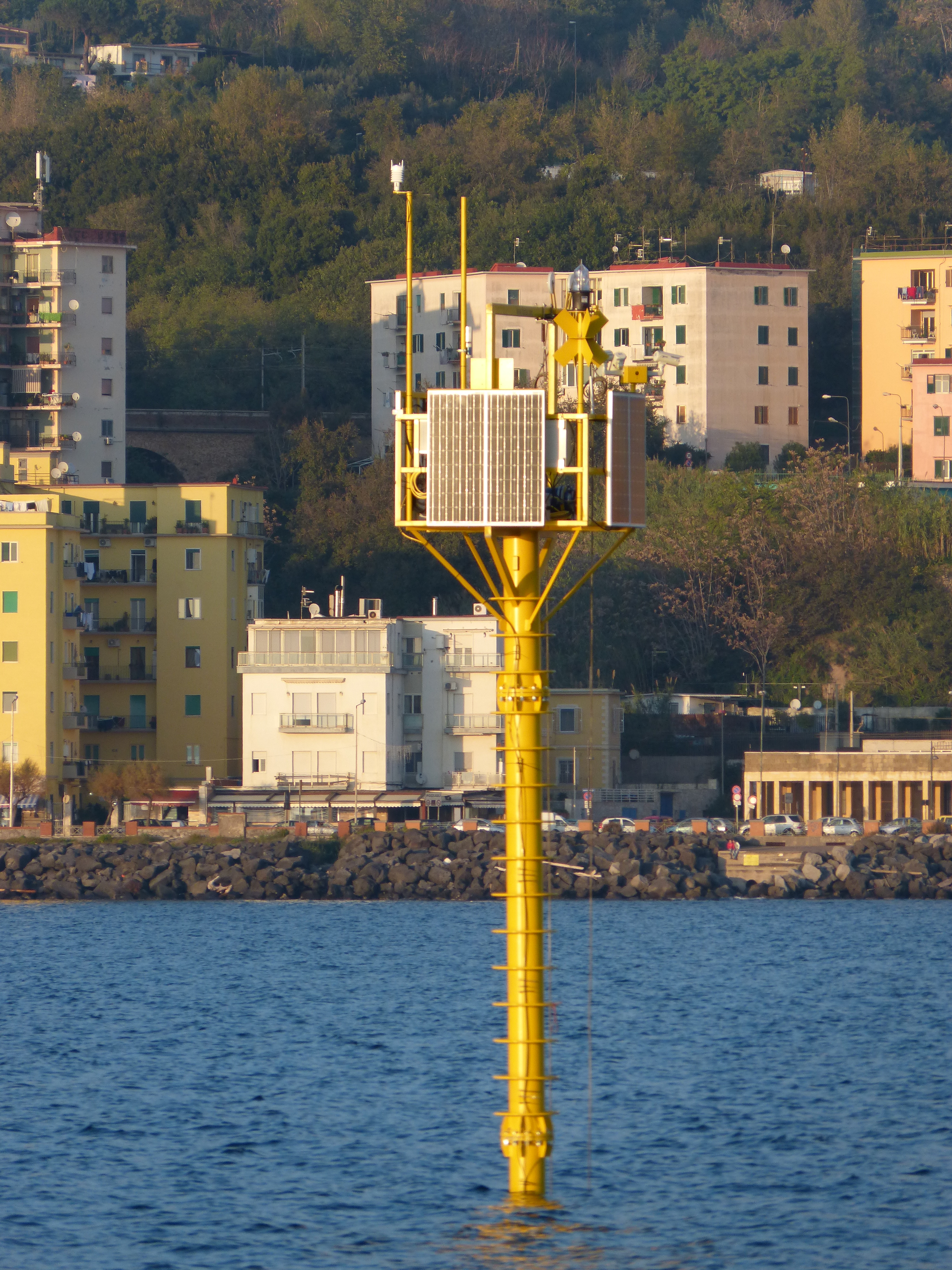 |
|
DATASET 1: ELASTIC BEACON MEDA A Bagnoli SIZE / DATA ARCHIVING MODE: .txt, .csv format with server archived data SZN DATA ACCESSIBILITY: currently not available online but available on request |
|
| Short Description | The elastic beacon "MEDA A Bagnoli" is located in the Bay of Bagnoli (Latitude: 40° 48.550' N, Longitude: 014° 09.300' E), a short distance from the coast, on a depth of about 19 m. The MEDA A is equipped with automatic instruments for continuous acquisition of weather-marine parameters, which allow to carry out high frequency and long-term measures. Data is transmitted in real-time to earth with a broadband Wi-Fi bridge and also with the GSM network. |
| Measuring Instruments |
Profile System (Multiparameter Probe) The system acquires the physical-chemical data along the water column from the surface to the depth of 15 meters, with hourly rate. The parameters acquired are: Depth (m), Temperature (°C), Salinity (psu), Dissolved Oxygen (ml/l), pH, Fluorescence (RFU) and Irradiance (μE/m2sec) Weather sensors The weather station on MEDA acquires continuously and returns clockwise the following parameters: Wind Direction (Degrees), Wind Speed (m/s), Air Temperature (° C), Atmospheric Pressure (hPa), Humidity Relative (%), Rain (mm/h) and Photosynthetically Active Radiation (PAR μE/m2×sec) ADCP Current meter The ADCP is located on the bottom at a short distance from the MEDA continuously acquires and returns every 15 minutes the following parameters: Current Direction (Degrees), Current Speed (m/s), Wave Height (m), Wave Period (s), Wave Direction (Degrees) and Tide (m) |
| Contacts |
Augusto Passarelli Monitoring and Environmental Data Unit (MEDA) tel. +39 081 5833 603-604 e-mail: augusto.passarelli(at)szn.it |
 |
Scienza e Responsabilità
|
 |
La musica degli ecosistemi
|
 |
Gli abissi del tempo: le prime forme di vita nel marePresentazione del libro di Marco Signore con le illustrazioni di Tommaso De FrancescoMartedì 7 novembre, ore 17.00 Introduce e modera: Roberto Danovaro, Roberto Paura Intervengono: Marco Signore e Tommaso De Francesco |
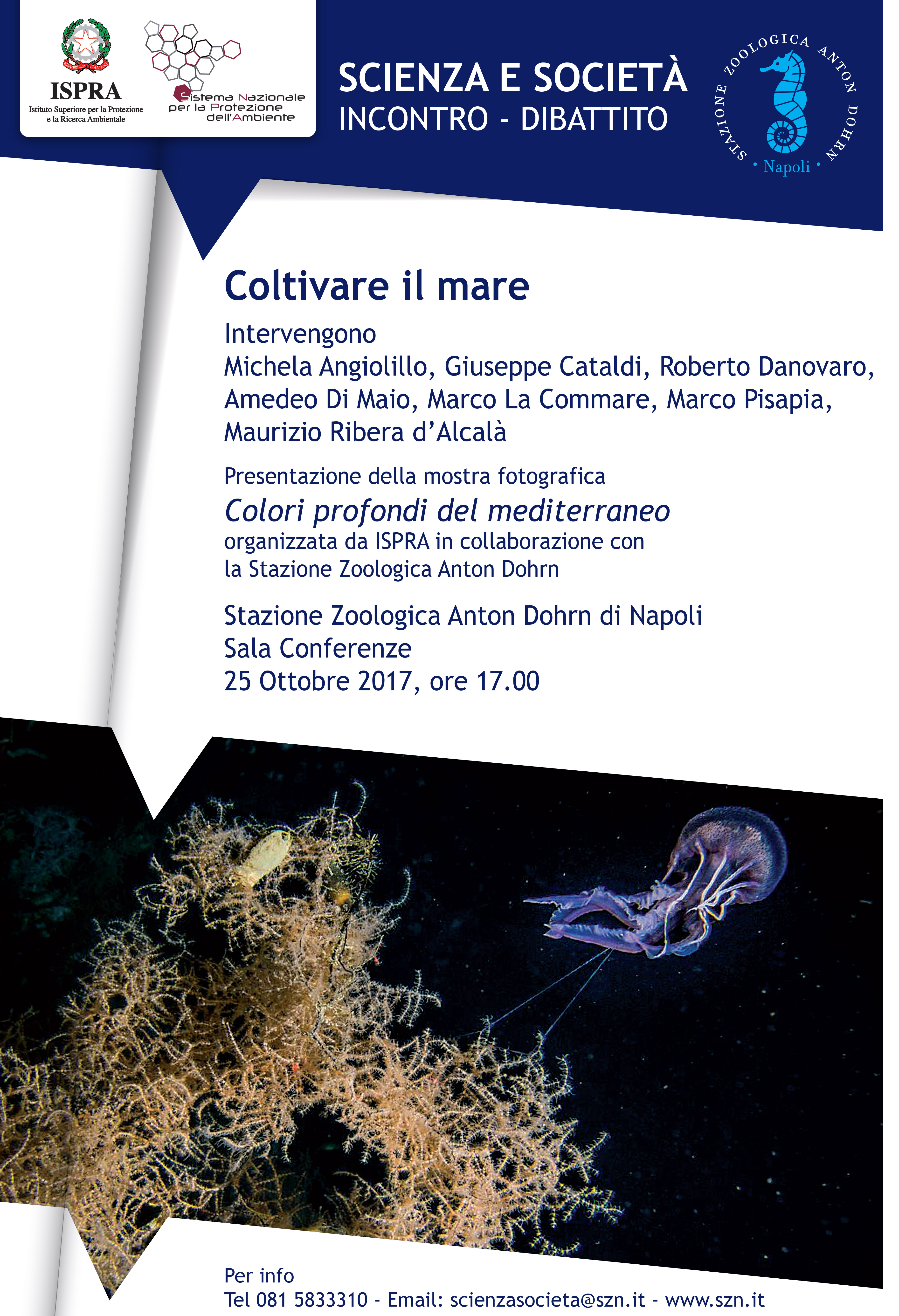 |
Coltivare il MareMercoledì 25 ottobre 2017, ore 17.00 Moderatore: Maurizio Ribera d’Alcalà Intervengono: Roberto Danovaro, Amedeo Di Maio, Giuseppe Cataldi Presentazione della mostra fotografica "Colori profondi del Mediterraneo" |
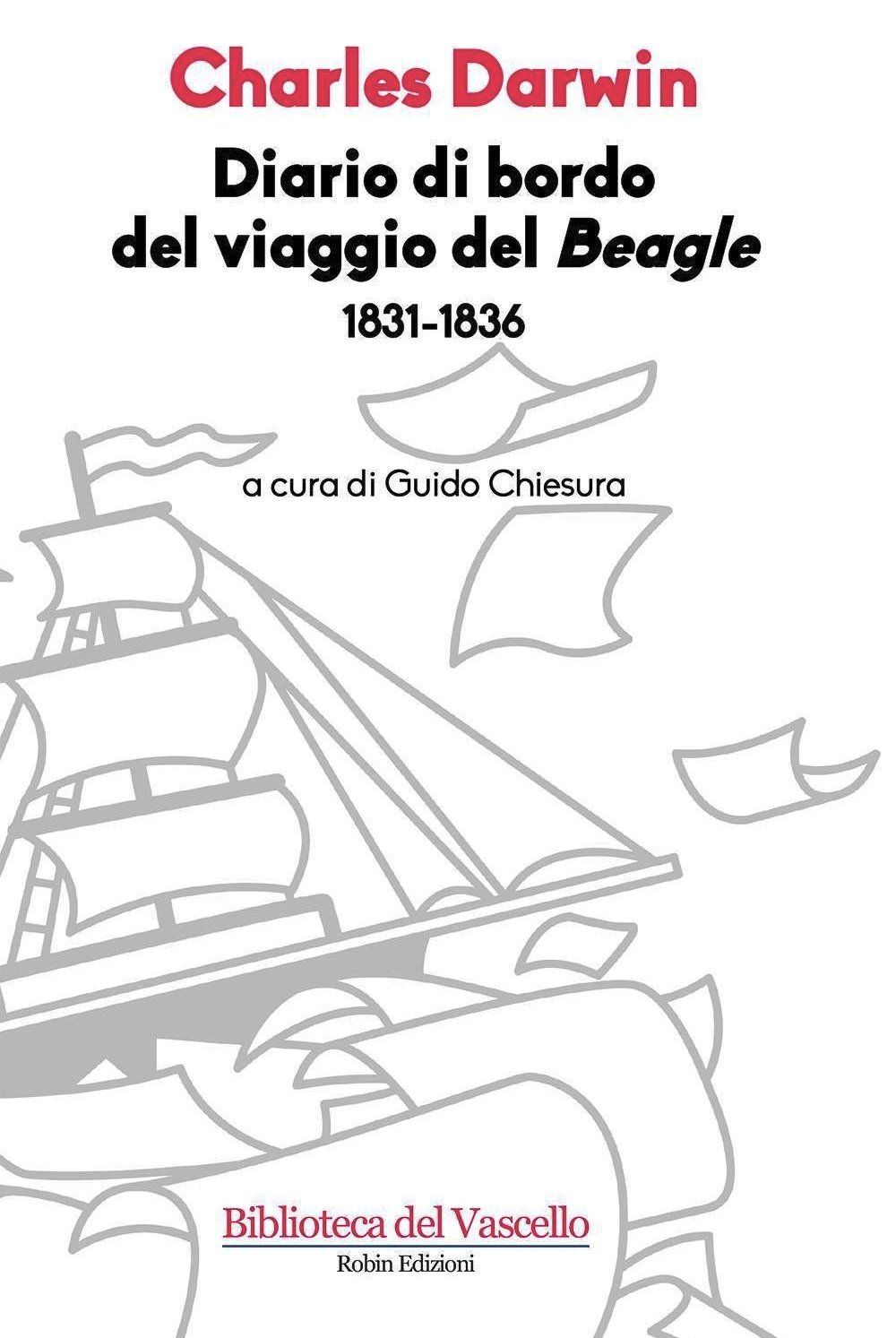 |
Diario di bordo del viaggio del Beagle
|
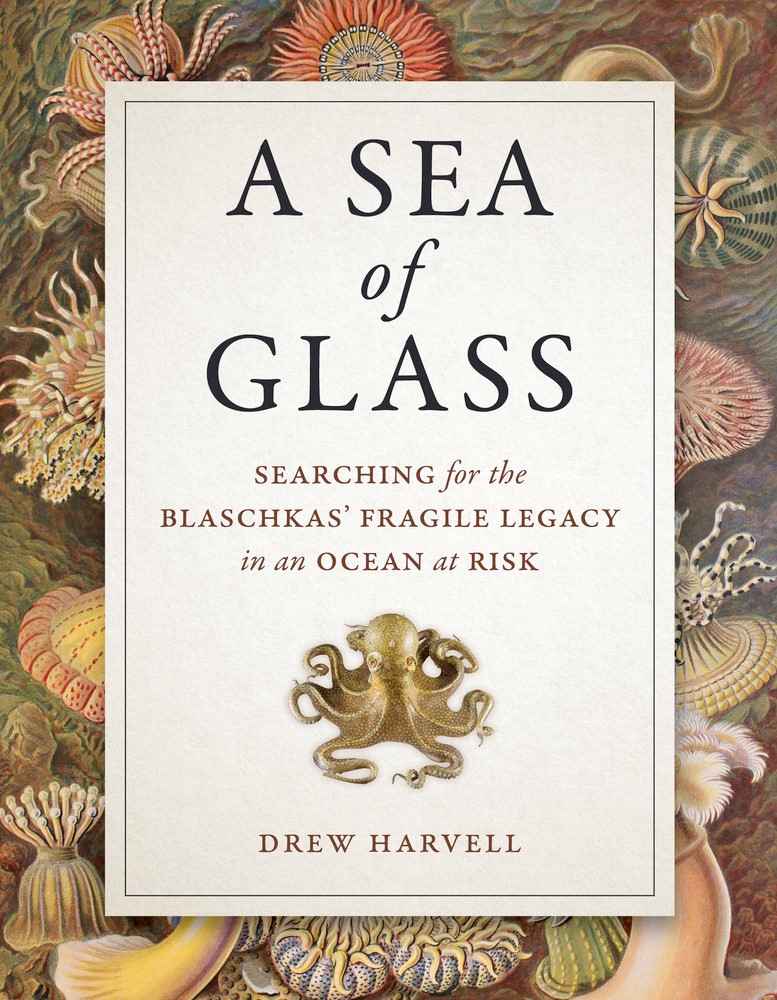 |
Un mare di vetro
|
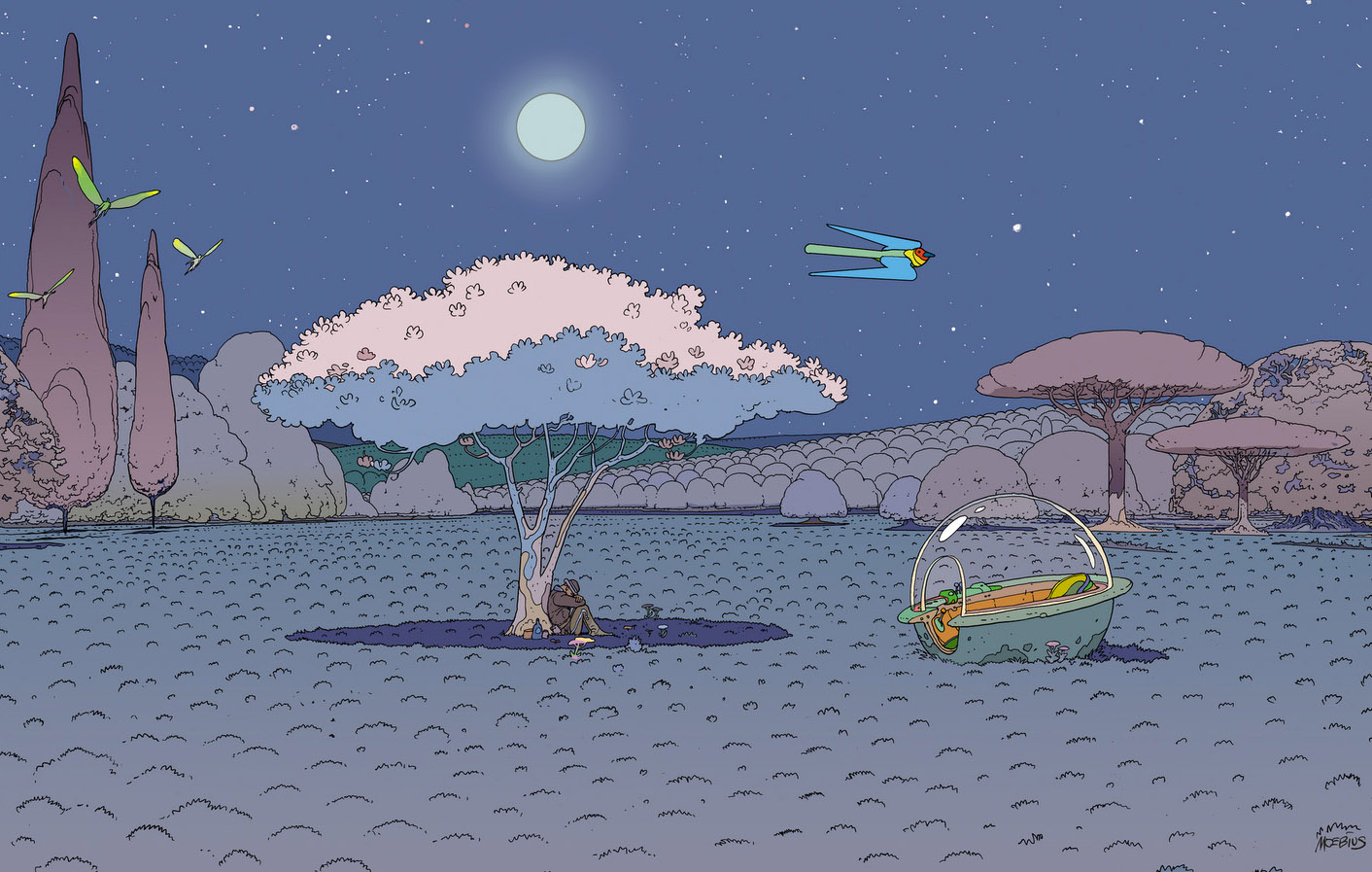 |
Buona scienza ma poca impresa: il paradosso della ricerca italianaMartedì 11 aprile 2017, ore 17.00Moderatore: Roberto Defez |
Marie Curie ITN EvoCELL
PhD Program Open University - Stazione Zoologica Anton Dohrn
Contract of collaboration n. 09/2017 (to be mentioned in the application)
Public call for the selection, based on examination of qualifications and interview, to assign the contract of collaboration n. 09/2017
THE DIRECTOR GENERAL
WHEREAS
- the articles 2222 and following ones of the Civil Code
- The local body of rules for the conferring tasks of of Collaboration, Study, Research and Consultancy and for the establishment of a Panel of Experts qualified to provide specialist support, Deliberation of the Administration Council n. 16 of 17 December 2009;
- the Set of Rules of the Stazione Zoologica Anton Dohrn (SZN) - Open University (OU) – Ph.D. Programme (approved with deliberation of the Administration Council n. 9 of 04/04/2017)
- the Grant Agreement n. 766053 (Prot. 4523 del 13/09/2017) ‘Animal evolution from a cell type perspective: multidisciplinary training in single-cell genomics, evo-devo and in science outreach — EvoCELL’ whose duration is 48 months starting 01/01/2018 and that foresee the training of a PhD student on the theme “The neuropeptidergic system of the sea urchin larva: insight into the evolutionary origins of pancreatic and photoreceptor cell types”;
- the guide for applicants Marie Skłodowska-Curie Actions Innovative Training Networks (ITN) Call Identifier: H2020-MSCA-ITN-2015
DECLARES
the opening of the following Call for a PhD position as indicated in the following art. 1
Art. 1 Subject of the Call
It is published a Public Call, based on examination of qualifications and interview, for a PhD position in the framework of the Marie Slovodska ITN EvoCELL “Animal evolution from a cell type perspective: multidisciplinary training in single-cell genomics, evo-devo and in science outreach”, to carry out a PhD Program with the project “The neuropeptidergic system of the sea urchin larva: insight into the evolutionary origins of pancreatic and photoreceptor cell types” with Director of Studies of Maria I. Arnone
Type of contract: employer-coordinated freelance work;
PhD Program: Open University – Stazione Zoologica
(UK PhD Degree)
Duration of the contract: 36 months;
Gross salary amount: The gross salary is approximately € 38000 (gross) per year, for three years, from which taxes and personal income tax will be subtracted. A family allowance of € 500 (gross) will be paid to the contractors who have family;
Tax treatment, social security scheme and insurance: the following provisions apply to the contract:
• If the contractor is resident in Italy, the contract is liable to:
- Personal income tax (IRPEF);
- Regional and local additional personal income tax;
- Social Insurance Contribution (INPS) (as provided by Art. 2, par. 26 and following ones, Law 8 August 1995, n. 335 as amended and supplemented, 1/3 of the 33,23 % or 24,00%, depending on the Social Security institution to which the contractor is registered to, will be on the contractor’s charge);
- Mandatory insurance against accident at work (INAIL - National Institute for Insurance against Accidents at Work), 1/3 of the due amount as provided by the Legislative Decree of 23 February 2000, n. 38.
• If the contractor is not resident in Italy, the contract is subject to:
- Personal income tax (IRPEF) 30% (art. 25 par.2 of Presidential Decree no. 600/73 or, alternatively, the treatments provided for by bilateral conventions.
Methods of payment: monthly posticipated;
Art. 2 Eligibility criteria
a) As provided in the guide for applicants Marie Skłodowska-Curie Actions Innovative Training Networks (ITN) Call Identifier: H2020-MSCA-ITN-2015, candidates can be of any nationality, but they are required to undertake transnational mobility (i.e. move from one country to another) when taking up their appointment.
Therefore, nationality is not a criterion. Rather the location of the candidate's residence or main activity during the 3 years prior to their recruitment is determining (see mobility rule).
b) To possess all civil and political rights;
c) To be not dismissed or laid off from the public service, for persistent poor performance, or be declared lost or being dismissed by a public employment, or banned from public office on the basis of res judicata;
d) To not have pending criminal proceedings or criminal convictions that undermines the possibility to conclude contracts of collaboration with the Public Administration;
e) Applicants should hold an advanced degree such as a Master of Science (M.Sc.) or its equivalent in a scientific area coherent with the project proposed before the start of the contract;
f) The PhD Program is in English. Therefore, applicants must possess sufficient command of the English language to receive training, present their work and to prepare and defend a thesis in English. Fluency in spoken English will be assessed during the entrance interview and is a strict prerequisite;
Mobility Rule: at the time of recruitment by the host organization, researchers must not have resided or carried out their main activity (work, studies, etc.) in Italy for more than 12 months in the 3 years immediately prior to the reference date.
Compulsory national service and/or short stays such as holidays are not taken into account. As far as international European interest organizations or international organizations are concerned, this rule does not apply to the hosting of eligible researchers. However, the appointed researcher must not have spent more than 12 months in the 3 years immediately prior to their recruitment at the Stazione Zoologica Anton Dohrn.
Art. 3 How to apply
1 Read the abstract of the projects: “The neuropeptidergic system of the sea urchin larva: insight into the evolutionary origins of pancreatic and photoreceptor cell types”;
2 Download and fill the Application form, complete and rename it before saving and sending;
3 Download the form for the recommendation letter and send it to 2 persons acquainted with the candidate’s professional achievements, who are able to give a qualified judgment on his/her skills and professional qualities as perspective PhD student.
The letters of recommendation are an essential part of the application. It is candidates’ responsibility to contact referees and to ensure that they send the form before the deadline for receiving applications on 15/12/2017.
Please forward the form to each of the two referees and ask them to complete it and sent it directly to the email address: phdszn(at)szn.it, from their institutional email address.
4 Download the checklist and be sure that you have all the required documents;
5 Send the filled Application Form together with the required attachments to the email address phdszn(at)szn.it WITHIN the Deadline 15/12/2017 h. 12.00.
Please indicate in the subject of the email: Contract of collaboration n. 09/2017.
Application received after the deadline will not be included in the selection procedure.
Art. 4 Attachment to the application from
1) scanned copies of the official certificate(s) of completion of the degree(s) with examinations passed and grades;
2) a CV (European format).
3) scanned copy of an Identity Document in due course
Art. 5 Evaluation Committee
Students will be selected by a 3 members Commission, nominated by the President, among the members of the PhD Board. They usually include the Director of Studies and a member of the PhD Coordination Committee.
Art. 6 Selection procedure
Applicants will receive a reply message to their application.
If you do not receive any email from us, please contact the person responsible of the procedure, phdszn(at)szn.it.
Applications will be evaluated by a Selection Committee on the basis of the candidate’s Education grade, experience and skills in the project area, motivation, reference letters and English proficiency. Selected candidates will be invited for interviews.
Art. 7 Interviews
The interviews (remote telematics connection is allowed) will be conducted in English and candidates will be asked to present their previous scientific experience and to discuss the project to which they are applying to. Their proficiency in English will be also tested.
Short listed candidates will be invited to the interview via email.
The interviews will take place between December 19th and 21st at the Stazione Zoologica Anton Dohrn, Villa Comunale, Naples, in a room with open access to public.
The interviews will be in person for the candidates resident in the province of Naples, all other candidates can be interviewed through remote internet video conference (e.g., Skype).
Art. 8 Exclusion from the selection
The Director General of the Stazione Zoologica Anton Dohrn may determine the exclusion of a candidate at any time, due to lack of requirements.
Art. 9 Order of merit and nomination of the winner
On completion of assessment procedure, the Commission will make the order of merit determined by the assessment of qualifications and interview examination.
The winner will be the candidate, usefully classified in order of merit. In case of equal merit of two or more candidates, the winner will be the youngest candidate.
The ranking list will be used to select another candidate in case of renounce or revocation of the right to be conferred the contract, of the selected one.
The President approves the order of merit and nominates the winner.
The candidates will be notified the result of the selection via email. The result will also be posted at the official board and on the web site of the Stazione Zoologica Anton Dohrn.
The final appointment of the successful candidates is subject to the approval of the Open University.
The activity is expected to start on 01/01/2018
Art. 10 Privacy policy
Under the decree of the 30 of June 2003, n. 196, the personal data of candidates will be collected and processed by the Stazione Zoologica Anton Dohrn, exclusively for the purposes of managing the selection.
Art. 11 Contract
Within 10 days from the selection of the winning candidate, the Director General will sign an employer-coordinated freelance work with the winner, as provided in the articles 2222 and following ones of the Civil Code.
The contractor carries out his/her PhD Project, with no employment bonds, within a coordinated freelance work .
The contract signing is subject to the respect of the law 19/2012 for the prevention and sanctioning of corruption and illegality in the public administration.
Art. 12 Withdrawal
The contractor my request to terminate the contract, with the prior notice of fifteen days. In such a case, the remuneration due to the contractor will be recalculated in proportion to the actual activity carried out.
In case of failure to notice, the Stazione Zoologica has the right to retain an amount corresponding to the fee for the non-given notice period.
This amount may be reduced, at the discretion of the Stazione Zoologica, in the event of a withdrawal for a good cause or justified reason.
Art. 13 – Termination of the contract
The contract may be terminated with a provision of the Director General. The request for revocation shall be made, in case of serious breach of the contractual obligations, on the proposal of the Director of Studies and the PhD Board and also heard the person concerned.
As provided by the art. 1353 of the Italian Civil Code, the completion of the research project or its interruption for causes outside the control of the SZN, upon a 15 days prior notice.
In such a case, the contractor will be paid for the activity actually carried out.
Art. 14 - Announcement
This call will be published on the web site of the Stazione Zoologica Anton Dohrn and on the web site euraxess.ec.europa.eu
Art. 15 – Person responsible of the procedure
The Responsible of the procedure is Gabriella Grossi
Art. 16 - Legislation
Any issue not expressly mentioned in the present call, refers to the laws and regulations in force.
If you have any question regarding the application process, please, contact Gabriella Grossi at phdszn(at)szn.it.
Download the call
Download the project abstract
Download the application form
Download the referee form
Download the application checklist
2017
Rivaro, P., Ianni, C., Langone, L., Ori, C., Aulicino, G., Cotroneo, Y., Saggiomo, M. and Mangoni, O. (2017). Physical and biological forcing of mesoscale variability in the carbonate system of the Ross Sea (Antarctica) during summer 2014’. Journal of Marine Systems 166:144-158 (http://dx.doi.org/10.1016/j.jmarsys.2015.11.002)
Saggiomo, M., Poulin, M., Mangoni, O., Lazzara, L., De Stefano, M., Sarno, D. and Zingone, A. (2017). Spring-time dynamics of diatom communities in landfast and underlying platelet ice in Terra Nova Bay, Ross Sea, Antarctica. Journal of Marine Systems 166:26-36. (http://dx.doi.org/10.1016/j.jmarsys.2016.06.007)
2016
Aoyama, M., et al. (including Margiotta, F.). IOCCP-JAMSTEC 2015 Inter-Laboratory calibration exercise of a certified reference material for nutrient in seawater. International Ocean Carbon Coordination Project (IOCCP) Report Number 1/2016. Japan Agency for Marine-Earth Science and Technology, Tokosuka, Japan (176pp).
D'Alelio, D., Margiotta, F., Sarno, D. and Ribera d'Alcalà, M. (2016). Plankton food-webs: to what extent can they be simplified? Advances in Oceanography and Limnology 7, 67-92.
Mangoni, O., Lombardo, R., Camminatiello, I. , Margiotta, F., Passarelli, A., Saggiomo, M. (2016). Phytoplankton community to assess the environmental status of the Adriatic Sea via non-linear partial least squares regression. Quality & Quantity (in press) First Online: 12 October 2016.
Pepi, M., Borra, M., Tamburrino, S., Saggiomo, M., Viola, A., Biffali, E., Balestra, C., Sprovieri, M. and Casotti, R. (2016). A Bacillus sp isolated from sediments of the Sarno River mouth, Gulf of Naples (Italy) produces a biofilm biosorbing Pb(II). Science of the Total Environment 562, 588-595.
Valenti D., Denaro G.; Spagnolo B., Mazzola S., Basilone G., Conversano F., Brunet C., Bonanno A. (2016) Stochastic models for phytoplankton dynamics in Mediterranean Sea. Elsevier Editorial System(tm) for Ecological Complexity, http://dx.doi.org/10.1016/j.ecocom.2015.06.001.
2015
D'Alelio, D., Mazzocchi, M. G., Montresor, M., Sarno, D., Zingone, A., Di Capua, I., Franze, G., Margiotta, F., Saggiomo, V. Ribera d'Alcala, M. (2015). The green-blue swing: plasticity of plankton food-webs in response to coastal oceanographic dynamics. Marine Ecology-an Evolutionary Perspective 36, 1155-1170.
Valenti D, Denaro G, Spagnolo B, Conversano F, Brunet C. (2015) How Diffusivity, Thermocline and Incident Light Intensity Modulate the Dynamics of Deep Chlorophyll Maximum in Tyrrhenian Sea. PLoS ONE 10(1): e0115468. doi:10.1371/journal. pone.0115468.
2014
Carella F, Aceto S, Saggiomo M, Mangoni O, De Vico G (2014). Gorgonian disease outbreak in the Gulf of Naples: pathology reveals cyanobacterial infection linked to elevated sea temperatures. Diseases of Aquatic Organisms, 110: 69-80.











